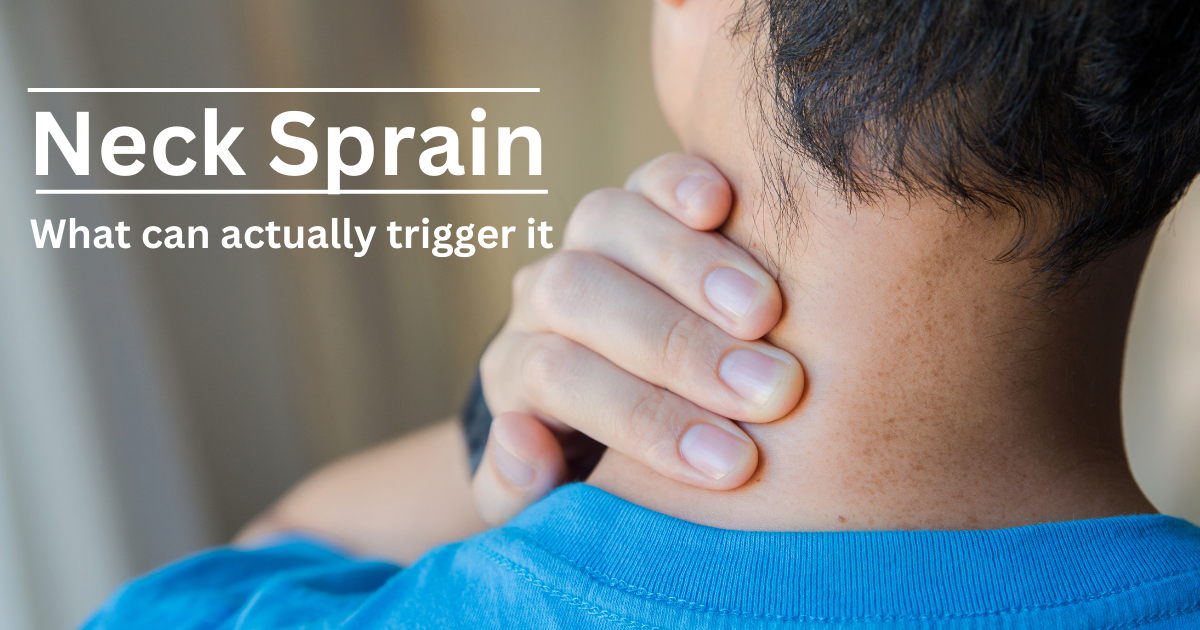What Does Neck Tendonitis Feel Like?
Do the upper neck and shoulder regions of your body continue to be sore and inflamed? Do you frequently experience mobility problems as a result of your upper body pain? Do you have trouble coping with the radiating discomfort that typically starts in the neck and extends up to the tips of your shoulders?

Depending on the degree of one’s ailment, each person will have a different description of what neck tendonitis feels like. From little to severe pain is possible. However, some patients receiving upper cervical therapy claim that neck tendonitis can occasionally be excruciatingly painful. Your capacity to carry out daily tasks may be impacted by this condition. Including driving, getting dressed, sleeping, participating in sports, and simply sitting at a desk.
Table of Contents
Neck Tendonitis Symptoms
#1. Neck pain
#2. Radiating pain
#3. Stiffness
#4. Swelling
#5. Tenderness
#6. Grating
Neck Tendonitis Causes
#1. Poor Posture
#2. Repetitive Strain
#3. Sudden Strain
#4. Sleep Position
Can Neck Tendonitis Be Healed With Upper Cervical Care?
Past Injuries Can Haunt Your Present Life: Act Now, Get Assistance!
Symptoms of Neck Tendonitis
Many symptoms can be brought on by this illness. To assist you cope better, it is always preferable to become more familiar with them. Some of the most typical signs of neck tendinitis are listed below:
Neck pain
Tendonitis can develop in the neck region and cause neck pain flare-ups.
Pain that radiates
With neck tendonitis, pain frequently spreads to the shoulders in addition to the neck.
Grating
If you have neck tendinitis, you might also experience grating sensations. This might cause a grinding sound or sensation in the neck.
Causes of Neck Tendonitis
Some neck tendonitis patients receiving upper cervical therapy are shocked to learn some of the typical causes of this neck ailment. Which are:
A bad posture
Maintaining proper posture is not only important for your appearance but also for the health of your neck. Tendonitis can develop in people who spend a lot of time behind the wheel of a car, sit at a computer for extended periods of time, or who frequently fall asleep with their heads in odd positions.
Repeated Stress
Your repetitive neck strain-causing activities may lead to neck tendonitis. For example, holding your phone between your ear and shoulder while on the phone or frequently craning your neck to look at your smartphone are all examples of this.
Abrupt strain
Acute injuries can develop from any rapid motion that overstretches or overextends the neck. For instance, straining your neck and the areas around it can result from falling, slipping, or being in a car accident. Neck tendinitis may result from this.
Sleeping Posture
Your uncomfortable sleeping position, which typically puts strain on the neck, may be to blame if you awaken with a stiff neck. Depending on how you want to sleep, you might want to find out what pillows are suggested. By doing this, you’ll ensure that your neck and head have plenty of support. Additionally, sleeping on your stomach should be avoided due to the prolonged twisting of your neck. care for upper cervical and neck tendinitis
Can Neck Tendonitis Be Healed With Upper Cervical Care?
Tendons attach to your bone at the neck, thus the way your bones are aligned might affect how easily you become injured and how long it could take to heal. In addition, the anatomy of your neck may be impacted by your upper cervical spine, which houses the atlas and axis bones. Particularly if the connective tissues rip after a neck or head accident, these bones are prone to misalignment. They may also have an impact on the factors mentioned above. The rest of your neck’s bones, including the soft tissues, often shift and compensate when your upper cervical bones are out of alignment to keep your head straight and your eyes level with the horizon. Misalignment can also make injuries, such as neck tendinitis, easier to sustain. However, However, your neck tendonitis and its symptoms may take longer to cure until the misalignment is corrected, resulting in chronic pain.
Ignoring it can Worsen it
Many people who experience chronic neck pain and other associated symptoms dismiss their health concerns until they get worse or worsening symptoms lead to other problems. Avoid being one of those statistics! Take the first step and educate yourself about your posture if you have neck tendonitis and have experienced head or neck issues in the past. Consult an upper cervical chiropractor to determine whether your neck bones are misaligned. You can discuss the following steps with your upper cervical specialist after you’re satisfied that your misplaced atlas and axis bones are the cause of your postural issues. To understand more about this organic approach, make an appointment with an upper cervical specialist in your area right away.



